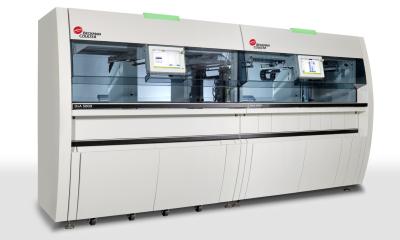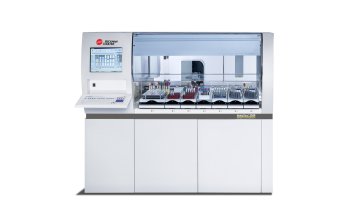Source: Shutterstock/hywards
News • Acute Coronary Syndrome
Access hsTnI assay rules out ACS in 2 hours
The clinical performance of Beckman Coulter's high-sensitivity troponin I (hsTnI) assay Access hsTnI has been validated in a study. Within 2 hours, the assay delivers an accurate assessment of patients with suspected acute coronary syndrome (ACS).
The diagnostic accuracy of the newly released hsTnI assay in expediting the emergency department (ED) disposition for patients evaluated for suspected ACS was reported on in a recent article in the Annals of Emergency Medicine.1 This group of experts confirmed that using serial Access hsTnI results (at 0 and 2 hours)—in conjunction with the clinical history and ECG results collected in five accelerated diagnostic pathways—can safely discharge one-third of ED patients with no further testing using the new Vancouver Chest Pain and No Objective Testing pathways, and can refer more than half of ED patients for objective testing in the EDACS, m-ADAPT and HEART pathways.
In 2015, the European Society of Cardiology (ESC) published their new clinical guidelines for the management of ACS in patients presenting without persistent ST-segment elevation.2 The 2-hour rule-out protocol, first investigated by the same expert group, was recommended by the 2015 ESC guidelines for rapid rule-out by combining the risk score with ECG and hsTnI results. This study validated Access hsTnI’s clinical performance in the existing 2-hour diagnostic pathways for suspected ACS patients, using the Access hsTnI’s 99th percentile upper reference limit from Beckman Coulter’s assay insert as the clinical cutoff value in accordance with international guidelines.2,3
The value of adopting this new assay into clinical care may be realized by using validated, accelerated diagnostic protocols, which have been shown to safely improve patient care
Louise Cullen
“High-sensitivity assays such as Beckman Coulter’s Access hsTnI have enabled emergency clinicians to make significant changes to assessment practices for patients with suspected ACS. The value of adopting this new assay into clinical care may be realized by using validated, accelerated diagnostic protocols, which have been shown to safely improve patient care,” said Louise Cullen, MBBS—an emergency department physician and joint principal researcher in the ASPECT and ADAPT trials from Brisbane, Australia.
The investigators from Royal Brisbane and Women’s Hospital compared five accelerated diagnostic pathways using patient data from the Australian cohort of the ADAPT study and the Improved Assessment of Chest-pain trial. Access hsTnI was measured with presentation and 2-hour blood samples in more than 1,800 patients. The eligible patient cohort is young, with a low prevalence of acute myocardial infarction (AMI, 5.3%) and ACS (7.7%).
The study confirms that Access hsTnI provides similar sensitivity, when used in the accelerated diagnostic pathways, compared to previously investigated high-sensitivity assays. The results show that the new Vancouver Chest Pain Rule and No Objective Testing Rule can safely rule out low-risk ACS patients (28.2% and 34.5%, respectively) within two hours when used in conjunction with Access hsTnI. No cases of AMI were detected in these low-risk patients in the 30-day follow-up. The use of sex-specific cutoff values had minimal effect on the results.
Doctors can now interpret low levels of troponin over time periods as short as two hours with greater confidence
Michael Samoszuk
The clinical utility of cardiac troponin continues to evolve as assays become more sensitive. Beckman Coulter is committed to respond to the evolving clinical needs for more efficient patient triage in EDs. The newly released Access hsTnI assay is designed to aid in the diagnosis of AMI patients, using the established 99th percentile cutoffs, in accordance with local regulations and guidelines. “This new study provides independent confirmation of the results obtained during our clinical trials of Access hsTnI. Doctors can now interpret low levels of troponin over time periods as short as two hours with greater confidence. This enables doctors to make faster and more accurate decisions regarding whether or not a myocardial infarction has occurred, particularly at lower levels of troponin,” said Michael Samoszuk, M.D., chief medical officer, Beckman Coulter.
1 Greenslade JH, et al. Diagnostic Accuracy of a New High-Sensitivity Troponin I Assay and Five Accelerated Diagnostic Pathways for Ruling Out Acute Myocardial Infarction and Acute Coronary Syndrome. Ann Emerg Med, April 2018; Vol 71, Issue 4, Pg. 439–451
2 Roffi M, et al. 2015 ESC guidelines for the management of acute coronary syndromes in patients presenting without persistent ST-segment elevation. Eur Heart J 2015; 14;37(3):267–315.
3 Thygesen K, et al. Third universal definition of myocardial infarction. Eur Heart J 2012; 33:2551–567.
Source: Beckman Coulter
26.07.2018











